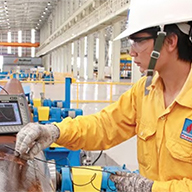[FTA Handbook] Overview of Vietnam's FTAs 2023 - Part 4: Opportunities and Challenges (End)
![[FTA Handbook] Overview of Vietnam's FTAs 2023 - Part 4: Opportunities and Challenges (End) [FTA Handbook] Overview of Vietnam's FTAs 2023 - Part 4: Opportunities and Challenges (End)](https://gl-m.linker-cdn.net/article/2023/Jul/8bb5e91d1002c0a927f207795c56b763.jpg)
Export Sector
107 week ago — 10 min read
G. Opportunities
1. Tariff incentives
When signing FTAs, Vietnam will benefit from preferential tariffs, including reducing or eliminating tariffs according to a specific route. Most countries have a common tariff that applies to the rest of the members. Not only promoting exports, but the reduced tariff rate also leads to a rapid increase in the source of imports among member countries due to cheaper prices, more diversified and richer quality and designs.
2. Promote domestic production
The strict rules of origin conditions in the new generation FTAs will create favourable conditions for direct production that replaces imported materials, reducing the dependence on imported raw materials. Domestic enterprises will be motivated to improve production efficiency, increase competitiveness and help create greater added value for exports.
3. Science and technology improvement
Regulations on rules of origin, techniques and environment for the export of goods will help promote the implementation of technical advances, technology transfer, and production capacity. In the future, enterprises are expected to apply new technologies and new materials to create export products with distinctive features, implement energy-saving and high-tech production programs, as well as protect the environment and consumers.
4. Enhance competitiveness
FTAs will help improve competitiveness on three levels of industry, enterprise, and product, and vice versa, enterprises in participating countries must create competitiveness to meet the provisions of FTAs. From there, exported goods will be competitive enough within the union and the international market.
5. Supply chain development
To make good use of tariff preferences, goods of countries participating in FTAs must meet the requirements of export quality standards. This will promote creating and developing a complete supply chain from design, raw materials, marketing, and distribution in countries participating in FTAs. New FTA markets will also bring opportunities to import quality raw materials for export production.
6. Investment attraction
FTAs promote the formation of the flow of investment capital in the production and export of goods. Because the commitments in the new generation FTAs ensure high benefits and fair competition towards sustainable development and support growth, investors and new investment markets appear, so the circulation of investment flows will become faster and stronger. As a result, FTA member countries will have many opportunities in developing commodity exports.
H. Challenges
1. Requirements on technical factors and rules of origin
Technical factors and rules of origin are always a big challenge for Vietnamese exports when participating in new-generation FTAs. The biggest goal of countries, including Vietnam, is to enhance the advantage of exporting goods to member countries participating in the FTA. To achieve this goal, exported goods must fully meet very high and complex technical requirements as well as rules of origin. This requirement requires manufacturing industries to invest in development from input materials to the design and production stages of goods.
2. High requirements for technology
High requirements on technology are both advantages and disadvantages in the development of export activities. Vietnam has not fully developed in the industrial field, productivity is still low, and so is technology. To ensure technical regulations, goods quality standards and environment, exporting enterprises need to meet technical requirements in production. This requires strong investment in technology, advanced machinery and equipment. This is a huge challenge for Vietnam in producing and exporting goods.
3. Safeguard measures from importing countries
An FTA member country imports goods and applies a safeguard measure by increasing the export tax on the exporting country when the quantity of these imports causes damage to the domestic industry. This measure is a form of support to protect domestic production when participating in FTAs. At that time, the exporting country will suffer economic losses because it can not take advantage of the preferential tax rates specified in the FTAs, causing difficulties for enterprises exporting goods in that country.
4. Competition between Foreign Direct Invested enterprises (FDI) and domestic enterprises
Participating in FTAs will attract a lot of FDI into the manufacturing sector, which is a big challenge for the domestic manufacturing industry. Foreign investors have advantages in finance, technology and the market. With the benefits gained from commitments in the FTA, foreign investors will invest in specific manufacturing industries. Foreign enterprises will move factories from other countries to the invested countries, causing competitive pressure on domestic enterprises. At that time, domestic products will face fierce competition with products of FDI enterprises, especially in price and product quality.
5. Labour conditions
High labour standards are one of the major difficulties for Vietnamese enterprises when participating in FTAs. To avoid unfair competition by failing to guarantee basic working conditions for workers, new-generation FTAs often include separate commitments on labour. However, the transition to meet labour standards take time. Meeting labour regulations to take advantage of FTAs is a challenge for Vietnamese SMEs.
6. Environmental conditions
In FTAs, trade-related environmental issues have been incorporated into binding commitments that member countries must conform to through the use of economic instruments. To implement environmental provisions, Vietnam needs to adjust policies and laws related to the environment to overcome inadequacies in environmental protection when producing and exporting goods.
I. Suggestions for Vietnam
To take advantage of opportunities and overcome challenges in exports when participating in new-generation FTAs, the Vietnamese government as well as SMEs need to take specific actions. Here are some solutions proposed by Dr Tran Thi Thu Hien, Department of Information, Library and Trade Promotion - Vietnam Institute of Strategy and Policy for Industry and Trade (VIOIT).
The first solution is to perfect trade and investment mechanisms and policies. FDI inflows need to be adjusted in the direction of selective attraction, prioritizing the development of key industries, industries using high technology, saving energy and protecting the environment.
The second solution is to develop technical standards for exported goods and develop regulations and standards for enterprises to export specific goods, creating a link between exporters and manufacturers.
The third solution is to adjust the structure of export products and the structure of export markets in accordance with the needs of domestic markets, regional as well as global markets. In addition, the adjustment of commodity and market structure must be consistent with Vietnam's commodity import and export strategy and other development strategies in the current context.
The fourth solution is to invest in infrastructure and technology - one of the important factors determining the quality of exported goods. Currently, most Vietnamese enterprises need to invest in technology to improve and apply scientific and technical advances to production and export, thereby creating quality products that meet export requirements and compete with other countries.
The fifth solution is to train high-quality human resources. Human resources, including human factors and the level of labour and management qualifications, are important factors determining the efficiency of production, business and export of goods when implementing FTAs. Vietnam has an abundant and cheap labour source, but it lacks a skilled and highly trained workforce, leading to low labour productivity. Enterprises need to focus on governance, training and developing high-quality human resources to meet the requirements and take full advantage of the FTAs.
Thus, FTA is the key to opening more ways for Vietnamese SMEs to connect with the world market. The signing and implementation of the FTA will improve the competitiveness of businesses and the position of Vietnam in the global supply chain thanks to new business and investment opportunities. In particular, new-generation FTAs such as CPTPP, EVFTA and RCEP bring more business opportunities, but the implementation and optimization of the potentials brought by FTAs are still challenges for Vietnamese SMEs. As a Growth and Finance Hub for SMEs with a diverse digital ecosystem, GroBanc hopes to be a partner of Vietnamese SMEs in the process of globalization, taking full advantage of the advantages that FTAs bring.
GroBanc- The Growth and Finance Hub for SMEs
(end)
Reference: Vietnam Institute of Strategy and Policy for Industry and Trade (VIOIT) - Ministry of Industry and Trade
View Linh 's profile
Other articles written by Linh Nguyen
SMEs là gì? – Định nghĩa SME ở các quốc gia ASEAN
107 week ago
Doanh Nghiệp Huy Động Vốn Như Thế Nào?
107 week ago
Most read this week
Trending
Get Efficient at Taking Decisions
Lãnh đạo & Quản lý 25 week ago
The Art & Science of People Pleasing in Retail
Bán lẻ 27 week ago
Khởi nghiệp 28 week ago















Comments
Share this content
Please login or Register to join the discussion